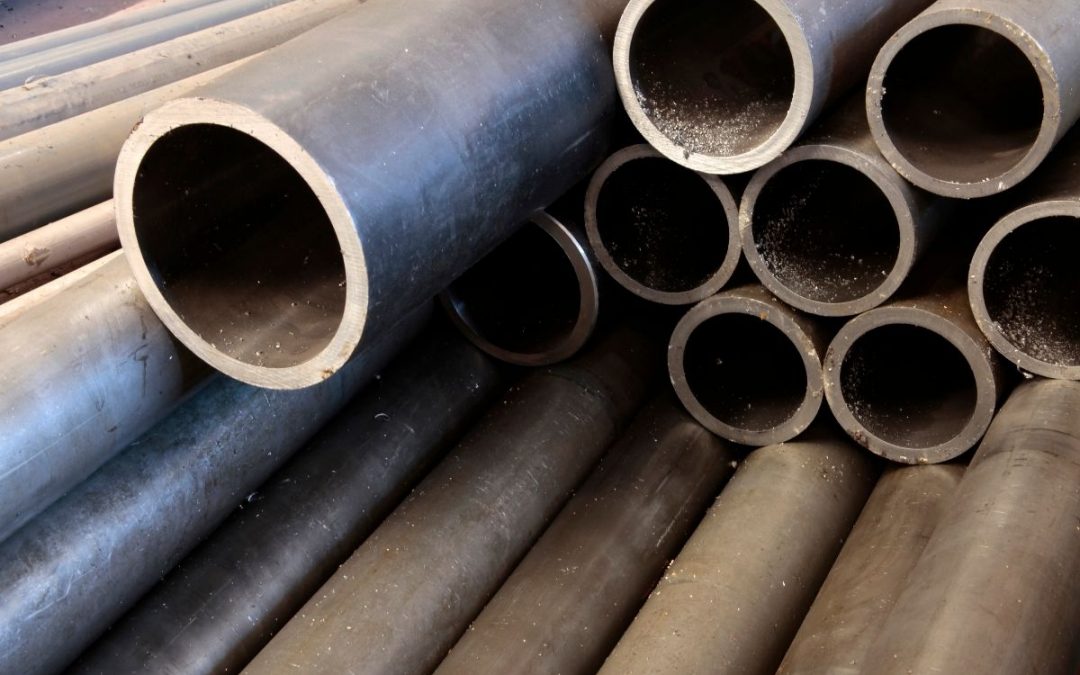Published Jan 18, 2021
One of the most important materials in construction is steel. It’s no surprise that most, if not all, structures have even a small element of steel to them. But one common misconception among most people is that all steel is created the same with similar makeup and strength. However, that is not the case. Carbon steel seems to be preferred by most construction experts and contractors, but why? In this article, we lay out everything you need to know about carbon steel from what it is and what makes it so good.
What is carbon steel?
At its core, steel is an alloy made up of iron, carbon, and a few other trace materials. It encompasses an entire family of metal alloys that fulfill a wide array of purposes in construction and other fields. Stainless steel is the type of steel that most people are familiar with and exposed to on a daily basis. It’s used in kitchenware and household fixtures and has that signature sheen we see so often.
Carbon steel, on the other hand, does not contain the same material that makes it shiny. What makes carbon steel stand out from the rest is its higher concentration of carbon, as its name suggests. Whereas most types of steel have an average carbon content of 0.05% to 0.3%, carbon steel sits much higher at around 2.5%. While 2.5% looks insignificant at face value, this higher concentration brings with it a heap of benefits you can’t find in other types of steel.
Advantages of carbon steel
Here are the advantages of carbon steel that stand out the most:
- Durability – Carbon steel is stronger than other types because of how the carbon shuffles around the steel’s crystal lattice. This makes it durable and shock-proof in the process. While it is not impervious to stress and breaking under pressure, it is still comparatively stronger than most others.
- Economical and green – Carbon steel is much more readily recyclable than other types of steel, making it a more economical and green option than producing new steel. It is also cheaper compared to others.
- Safe – This advantage is common to most steels, as they are relatively safer to handle than most other materials.
- Highly malleable – The uses of carbon steel range far and wide because of its malleability. Malleability refers to the attribute of metals to be shaped desirably. This allows carbon steel to be used in many different industries in a variety of ways, from automobile parts to cutting tools.
Disadvantages of carbon steel
On the other side of the coin, you have the following disadvantages:
- Susceptible to rusting – Perhaps the most glaring disadvantage of carbon steel is how easily it rusts. To protect against rusting, manufacturers will throw some chromium into the mix, usually about 10-12%. Chromium protects the steel by creating a barrier resistant to moisture, which is the primary cause of rusting. Carbon steel does not have chromium, making it susceptible to rusting after prolonged exposure to moisture.
- Less attractive appearance – In a side-by-side comparison with stainless steel, carbon steel loses in appearance. It looks far more rugged and unrefined, which could be off-putting in some settings like interior building fixtures. For this reason, carbon steel is usually used where it is not seen a lot, as in piping, manufacturing machinery, and automobile parts.
Types of carbon steel
Carbon steel is typically classified according to its carbon content, from low to high.

- w-carbon steel – Low-carbon steel is the most widely used type, and it contains about as much as 0.25% of carbon. Their low carbon content makes them more malleable and ductile, but simultaneously weaker too. This type cannot be hardened by heat treatment, but cold work seems to be effective.
- Medium-carbon steel – Medium-carbon steel contains about 0.24-0.6% carbon and incorporates about 0.6-1.65% of manganese. Unlike low-carbon steel, these can be improved through heat treatment but only on the very thin parts of the steel.
High-carbon steel – High-carbon steel has a carbon content of about 0.6-1.25% and a manganese content of about 0.3-0.9%. These are the hardest and toughest types of carbon steel, but the tradeoff is that it has the lowest ductility. They are extremely wear-resistant because they are almost always tempered and hardened.
Interested In Cutting Technologies?
For nearly 40 years Cutting Technologies (CTI) has been the go-to demolition contractor for technically demanding, one-off jobs. Our wealth of experience enables CTI to bring “outside-of-the-block” approaches to achieve the impossible. Contractors trust CTI to get the job done right. Take a look at our demolition services on our website.

About The Author
Terrence Tan Ting is an industrial engineer by profession but a full time writer by passion. He loves to write about a wide range of topics from many different industries thanks to his undying curiosity.

